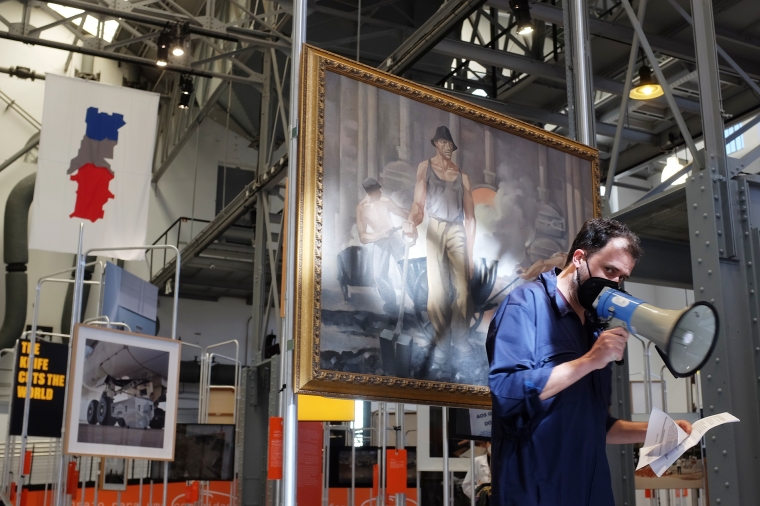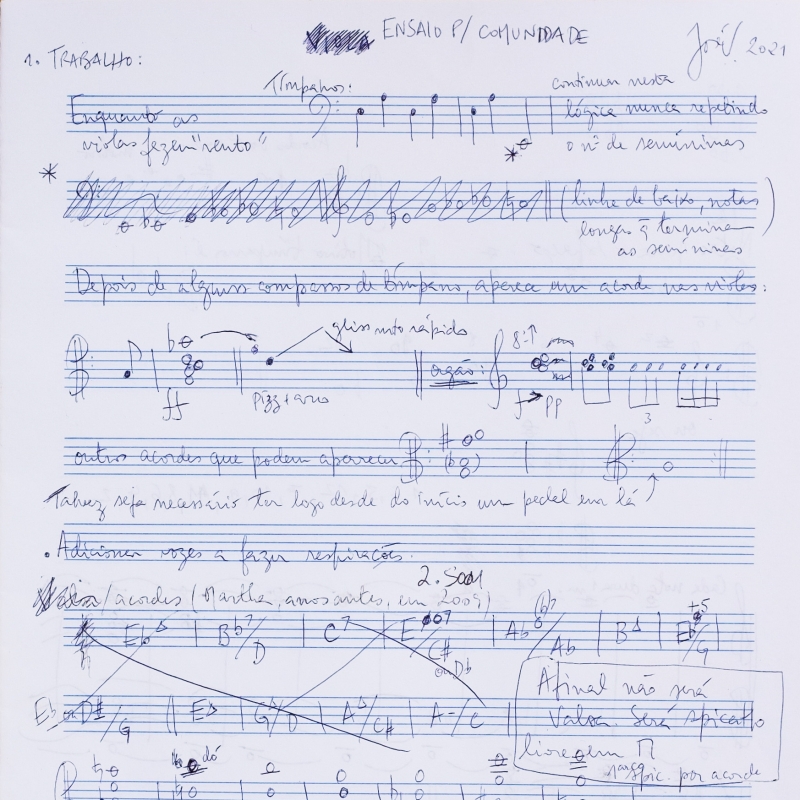Rehearsal for a community
Portrait of a collection under construction (take 1)
by Paulo Mendes
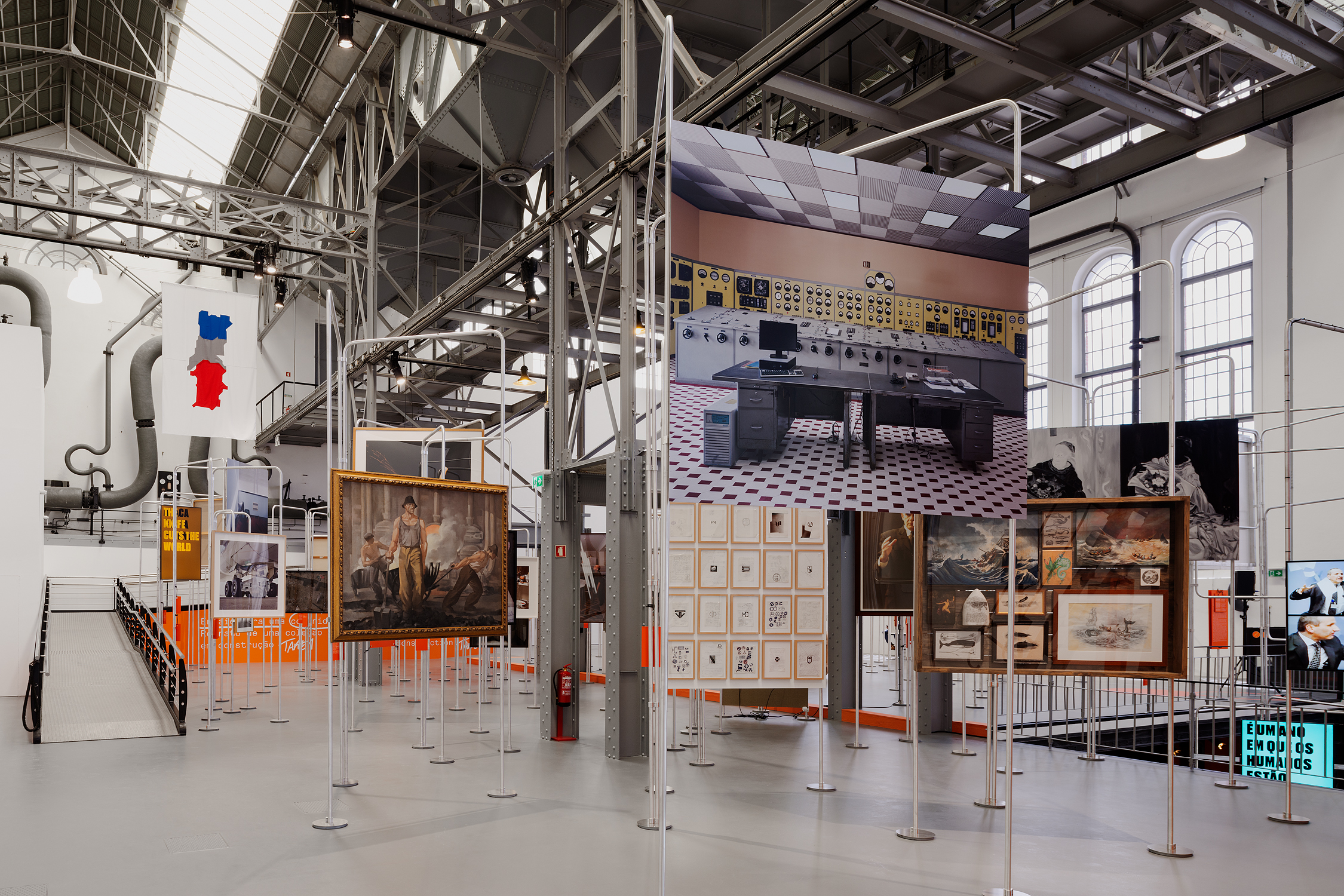
Views of the exhibition “REHEARSAL FOR A COMMUNITY – Portrait of a collection under construction (take 1)” (maat, 24/04–31/01/2022) by Daniel Malhão, courtesy of EDP Foundation / maat.
An exhibition is a stage for the creation of fiction.
A moment in which time is suspended, an experience of sharing the organic and dynamic dimensions of life.
The exhibition-installation Rehearsal for a community — Portrait of a collection under construction (take 1) creates a new architectural landscape for a reading of the Central Tejo power station industrial space and the EDP Foundation Portuguese Art Collection. The works presented cover the full time spectrum encompassed by the collection: from 1942 to the present. As such, many are recognisable images that speak to us and invoke memories of our daily lives, while also revealing other possibilities of interpretation and narrative.
The exhibition is composed of four inter-related “stages” or thematic sections: Work – Word – Sound – Laziness. The exhibition-installation creates an intimate relationship between the visual arts and the performing arts through continuous provocation of performative action on the part of the visitor and through the scenographic / theatrical elements of the exhibition setting, underpinned with original text and music that accompany us throughout.
Original contributions, a text by Gonçalo M. Tavares and music by José Valente, are a possible script for a new fiction we create in our encounter with the dozens of works present in this arrangement of the collection that invokes various collective, social and political memories. The participation of these two creators from different disciplines of the visual arts forms part of an aim to intensify the narrative polyphony of the exhibition project. Emphasis is thus placed on the singularity and heterogeneity of the works as protagonists in a story that runs in parallel to image, text and sound. These components contaminate and appropriate each other in an organic construction which eschews a totalitarian or orthodox orientation in order to reinvent the real through the deconstruction of historical time.
Articulated as a space for discussion and active reflection, Rehearsal for a community — Portrait of a collection under construction (take 1) is based on an experimental path that questions the institutional place of art itself.
View of the section Work. Photo: Daniel Malhão. Courtesy of EDP Foundation / maat.
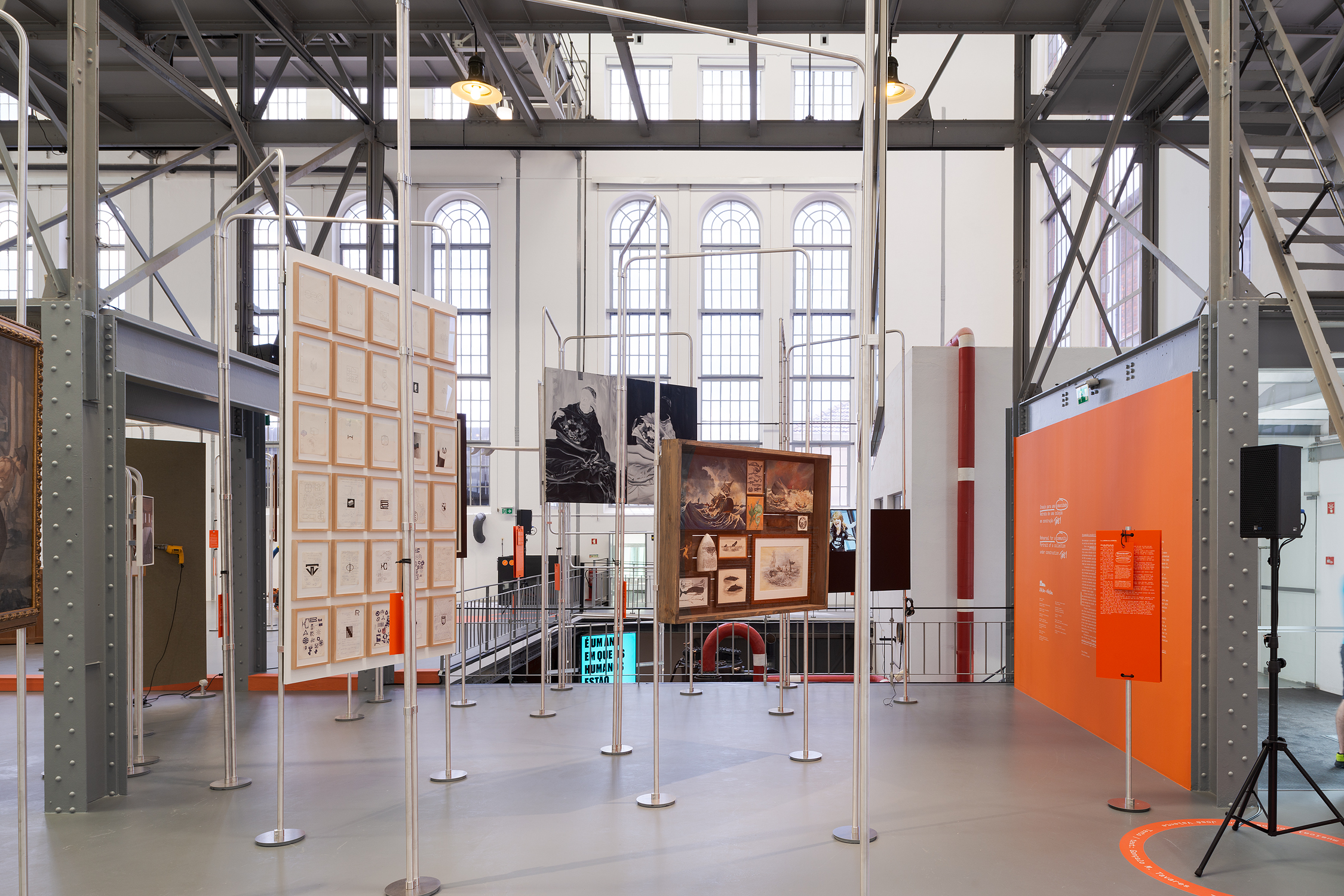
The Central Tejo power plant, a thermoelectric power plant built in the beginning of the 20th century. The workers operating in this industrial building, where the boilers that supplied the city of Lisbon with electricity used to function, are now very different.
Today, this is a space of cultural production and consumption.
The exhibition proposal challenges the visitor’s expectations by destabilising the academic exhibition rules and providing another perspective through an immersive environment, in which reminiscences of the industrial past are juxtaposed with the contemporary production of culture.
The works presented on this thematic “stage” represent various associations around this fundamental principle of work, referring to the foundational moment, the oldest work of the collection: Homens do Fogo [Men of Fire], from 1942.
We variously observe Fordist factory production, the revolutions of the proletariat and its utopias, ruin as opposed to technological preponderance, immigration and border policies, work as a way of perpetuating certain readings of gender, workers as victims of economic speculation and commercial strategies.
The economy must transcend narrow definitions of productivity and efficiency to include the fundamental role of culture and cultural workers as builders of the material and immaterial heritage that will be critical for future generations.
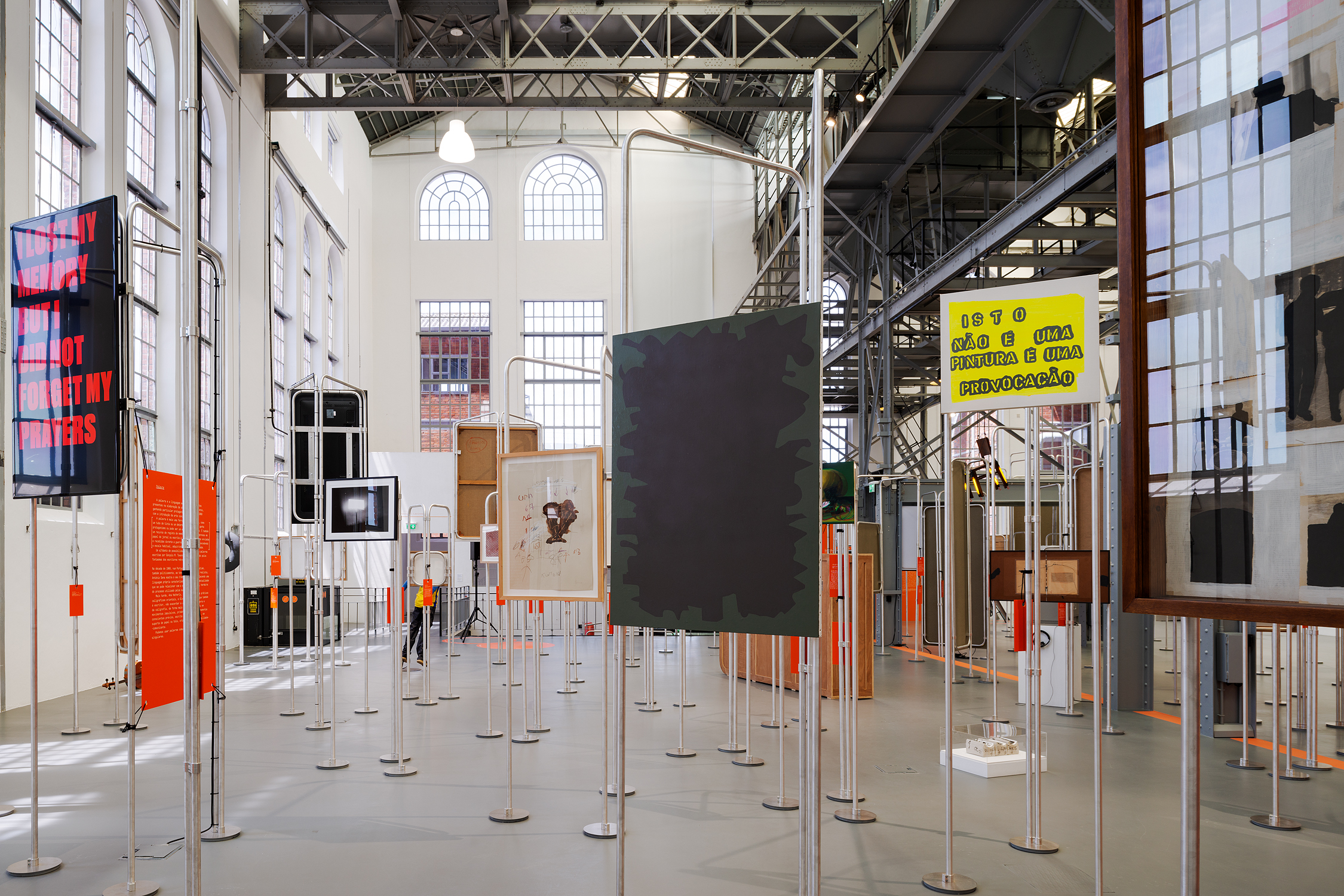
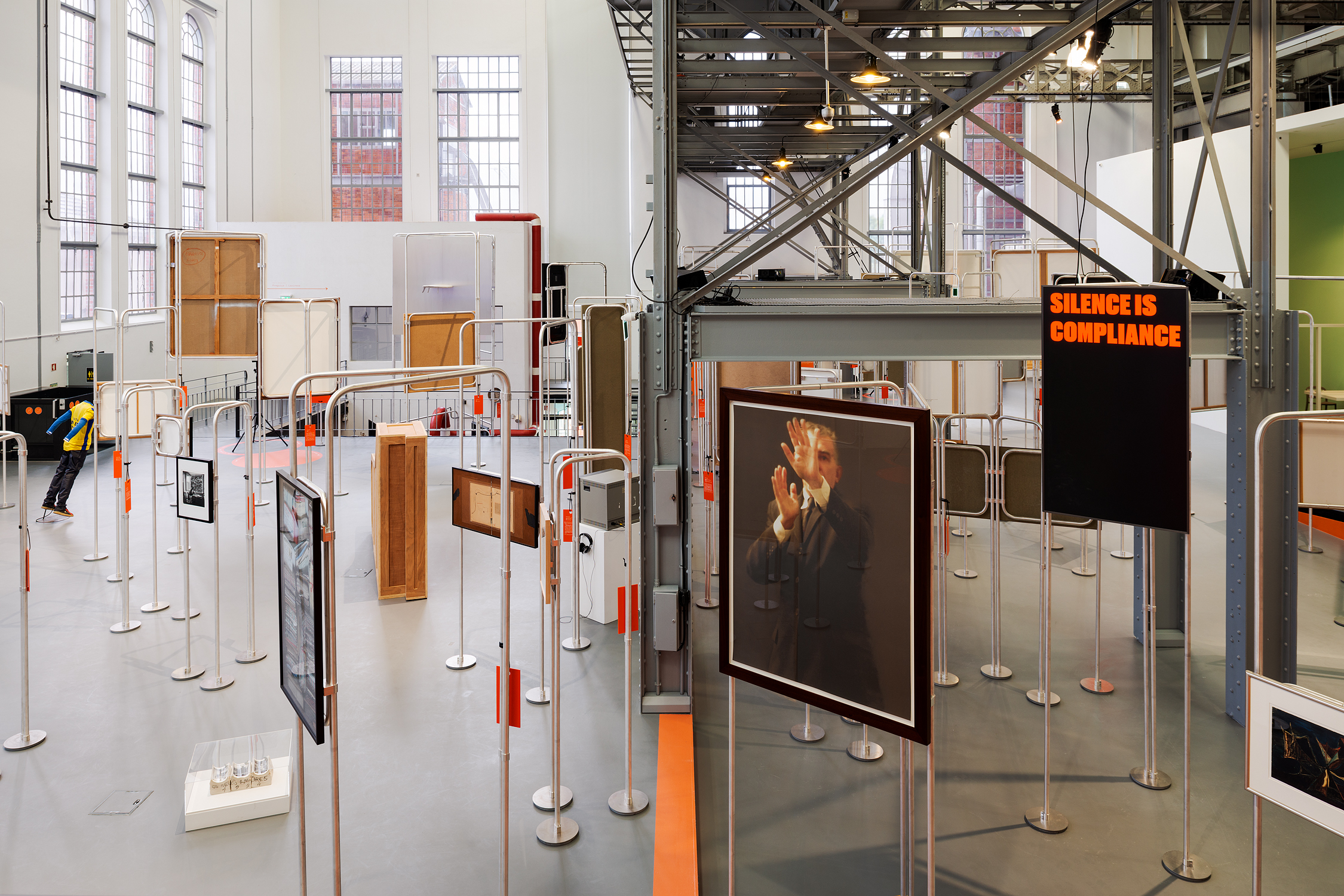
Views of the section Word. Photo: Daniel Malhão, courtesy of EDP Foundation / maat.
The written word and language have long had a presence in art, gaining special prominence in the 1960s with the emergence of conceptual art.
The written word has become a work tool, like a tube of paint or a particular brush, playing either a primary or secondary role. Whether printed on a newspaper or handwritten as in the case of correspondence during the colonial war, or even used at a scale that produces new visual qualities, it is also a tool for the preservation of memory.
An alphabet of possibilities explored in the words written by Gonçalo M. Tavares, here accompanied by the ghosts of the writers portrayed.
In 1960s Portugal, when abstract and realist trends in art were a subject of political discussion, António Sena began to establish his own stylistic language and show his work, which is characterised by a certain gestural hand that can be associated with automatic writing, a process whose lineage takes us back to the surrealists.
Later, Ana Hatherly, influenced by oriental calligraphic practices, and Álvaro Lapa, a painter-writer, developed the use of the word and calligraphy, either in a more conceptual manner or in impulsive, primary movements without conscious forethought, sometimes concealing the writing, and using paper or canvas as support for a communicative incommunicability.
Common words can be used to say remarkable things.
View of the exhibition. Photo: Paulo Mendes Archive Studio.
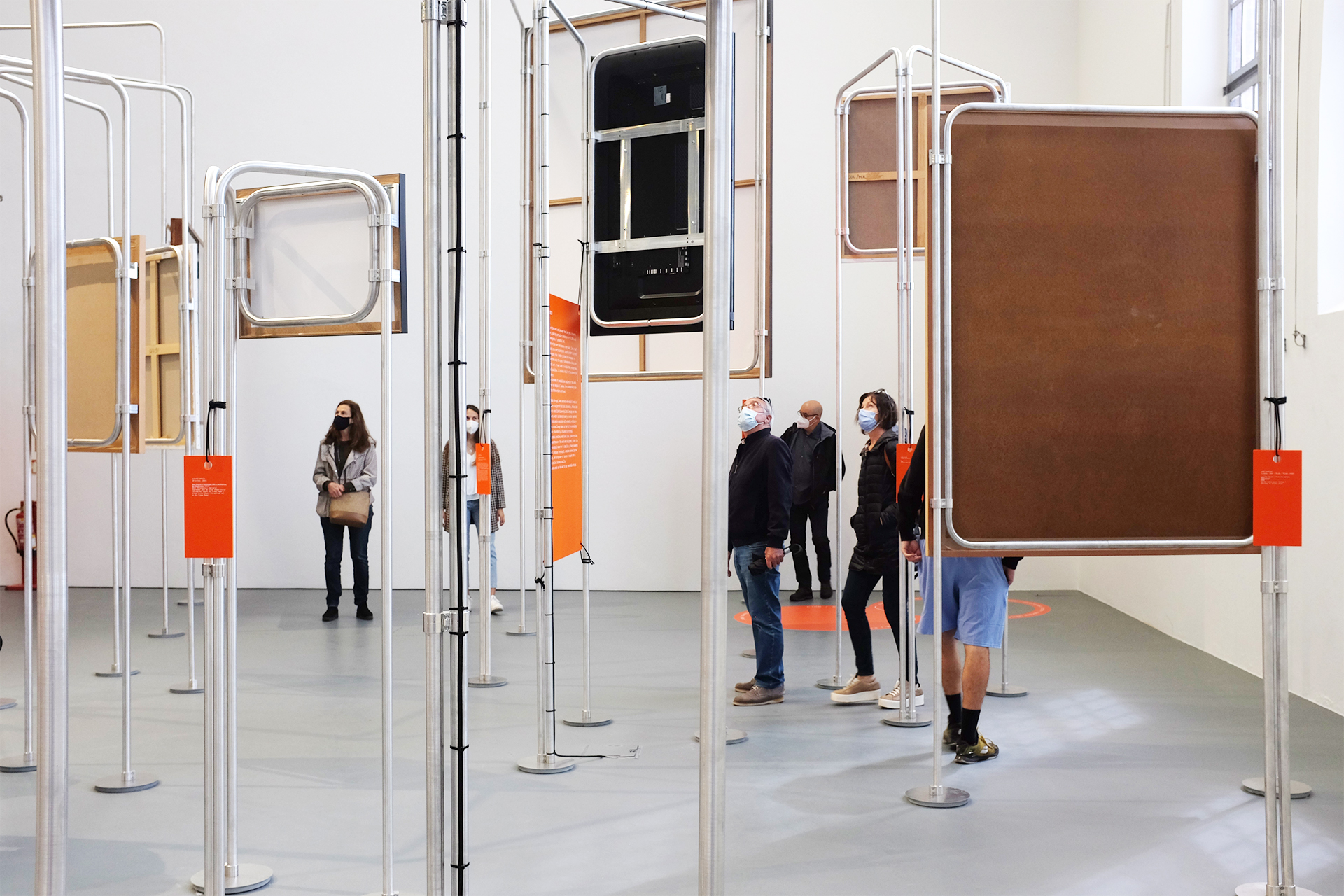
View of the section Sound. Photo: Daniel Malhão, courtesy of EDP Foundation / maat.
View of section Word from the section Sound. Photo: Daniel Malhão, courtesy of EDP Foundation / maat.
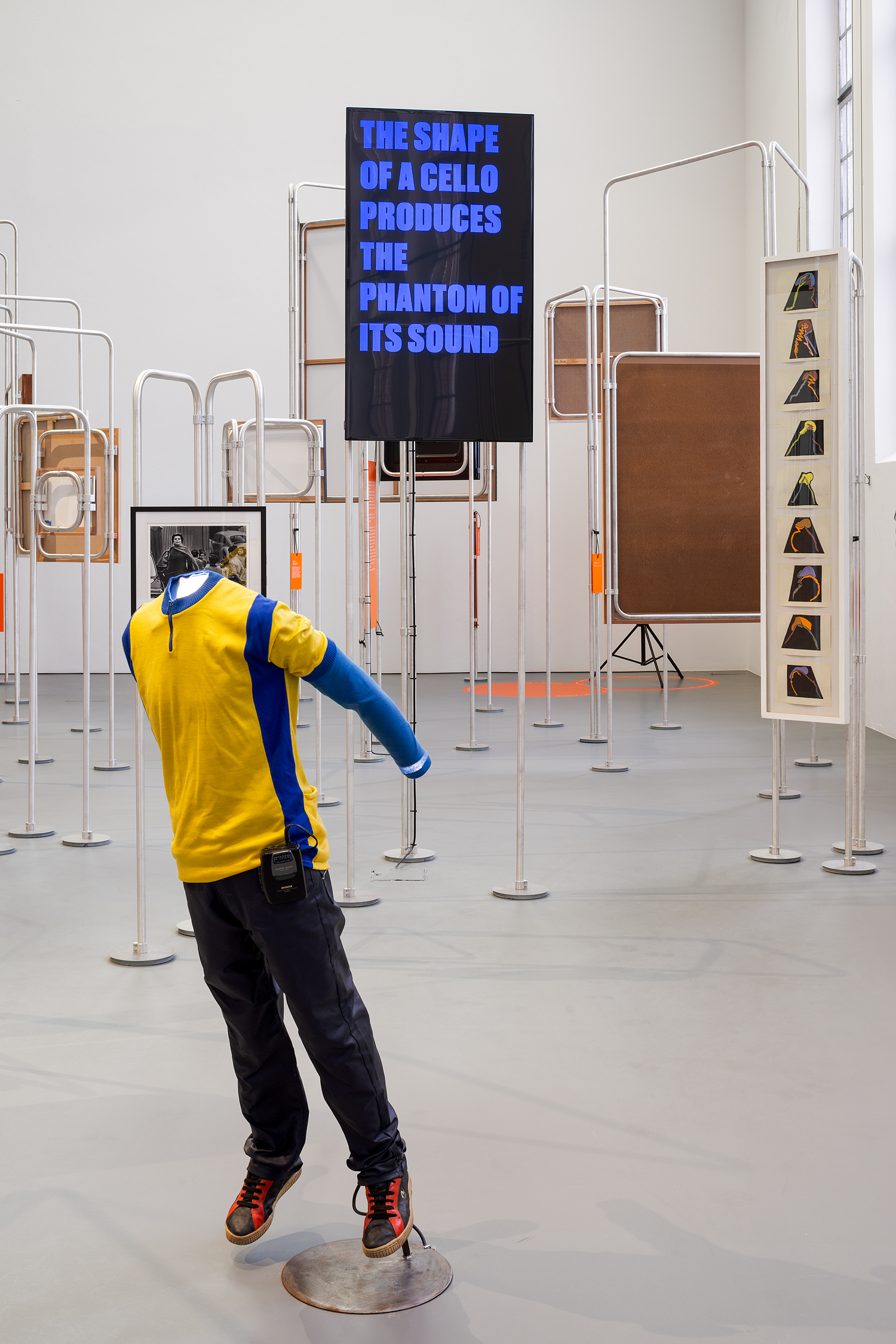 |
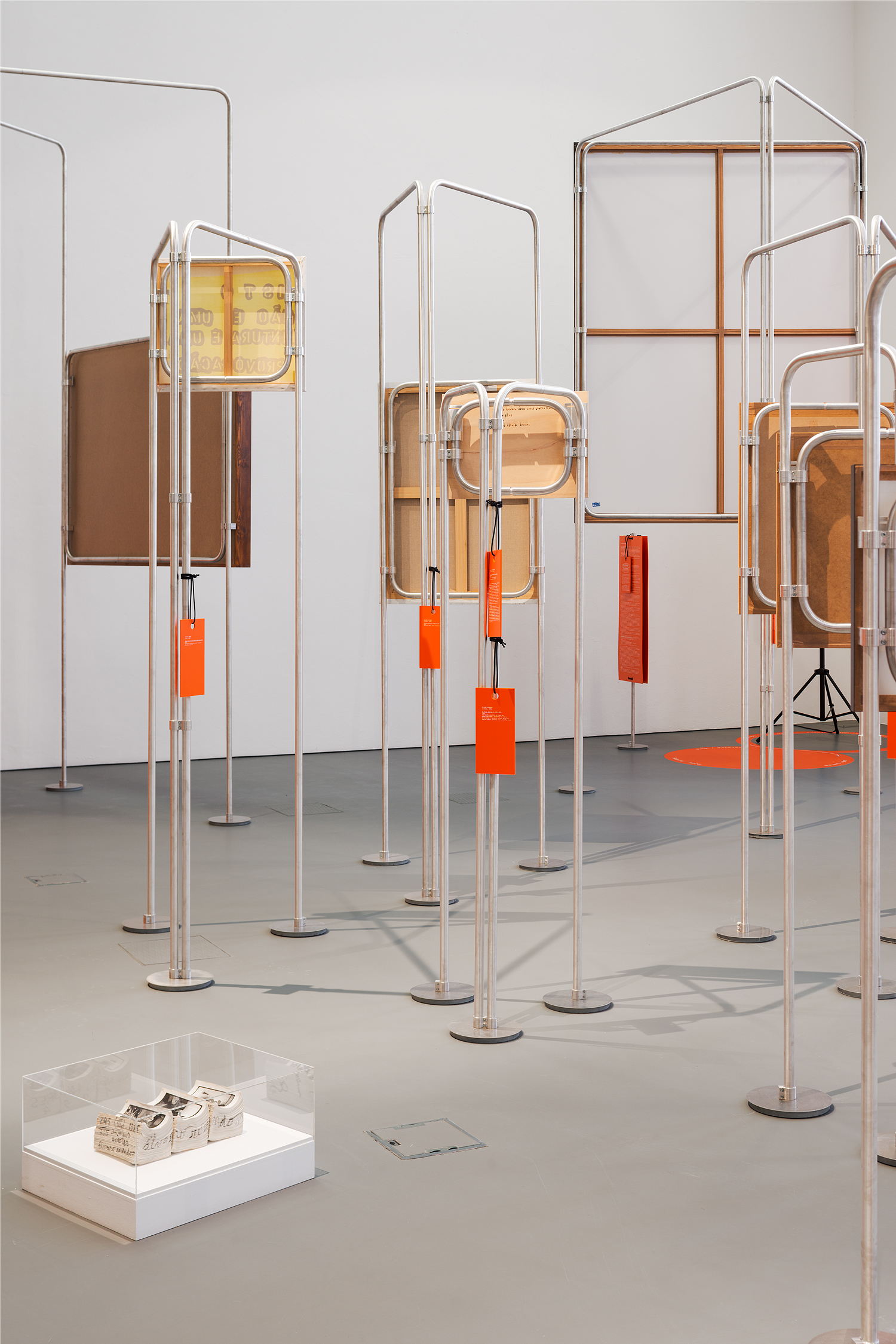 |
Several musicians walk on stage and display their works. In their double lives, they explore the intersections between visual arts and the world of sound. Making music, performing in bands or participating in more experimental and conceptual sound projects leads to an expansion of creative possibilities into other fields. The production of music and musical performances involves another kind of work, generally more collaborative, and another kind of experience in relation to the public.
The relationship between the fields of image and sound creation became particularly relevant after the modernist avant-garde, reaching primacy in the second half of the 20th century with the introduction of more performative aspects in the relationship between art and its receptors.
The disruptive energy of sound and music also plays an important social role in bringing generations and identities together.
In this industrial space, beyond the sound of José Valente’s original musical composition, we also witness a concert in potency, of sounds manifested in the works of visual artists who are also musicians or collaborate in musical projects, including João Paulo Feliciano, João Ferro Martins, Rui Valério and António Olaio, who, in this creative bifurcation, tread a path shared with other international artists such as Mike Kelley, Raymond Pettibon or Christian Marclay.
The mute works produce a deafening silence that provokes a formal and sonic collision.
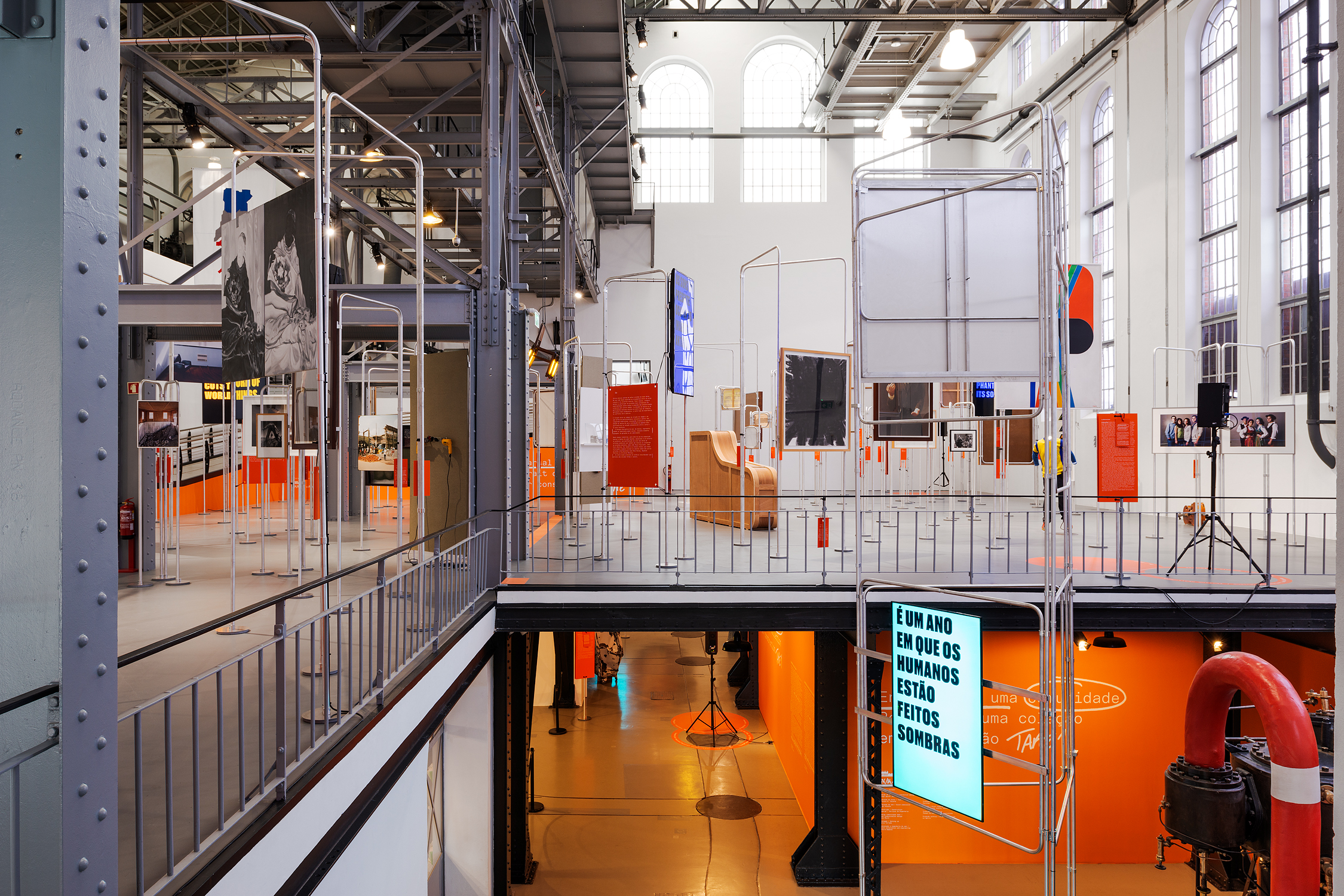
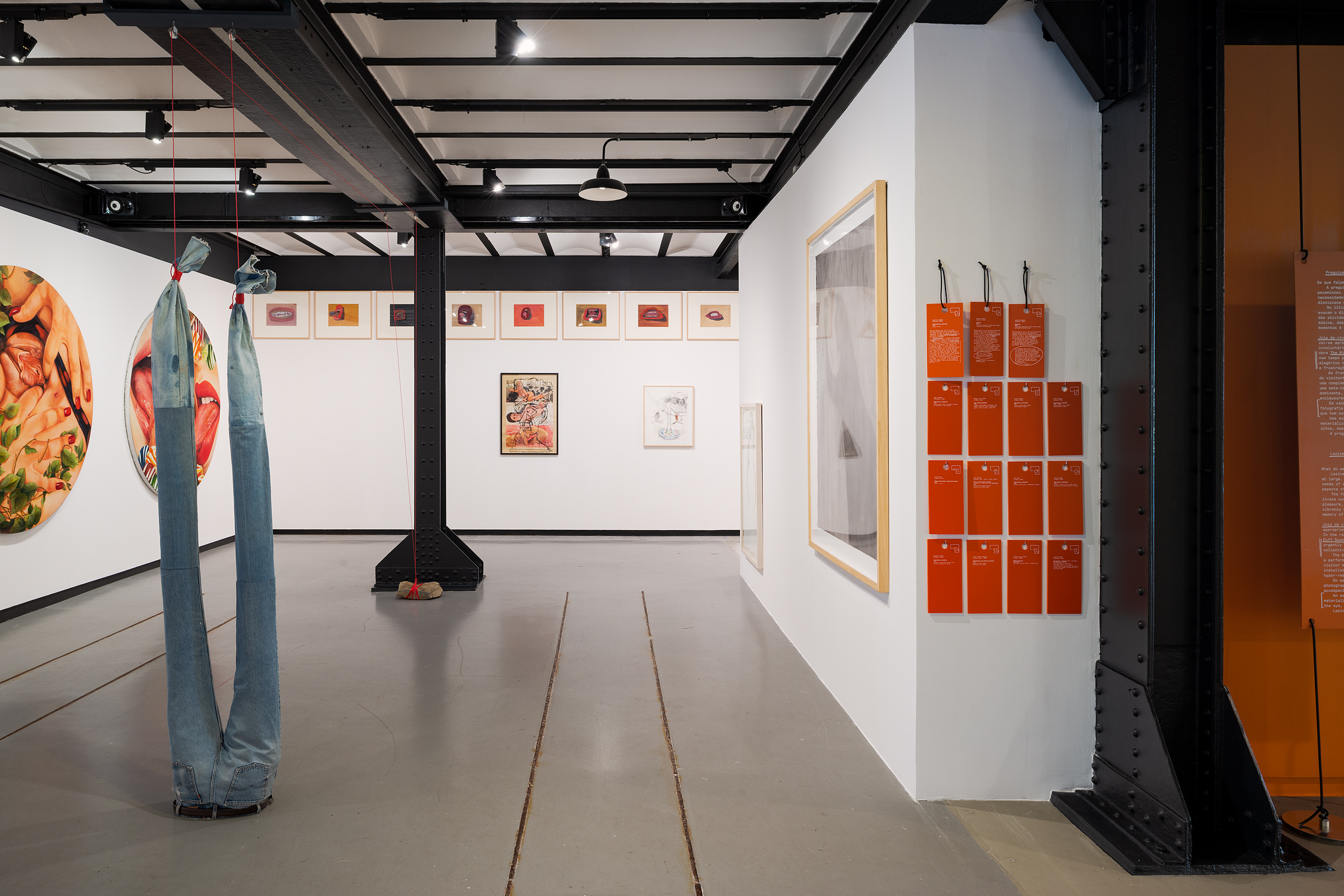
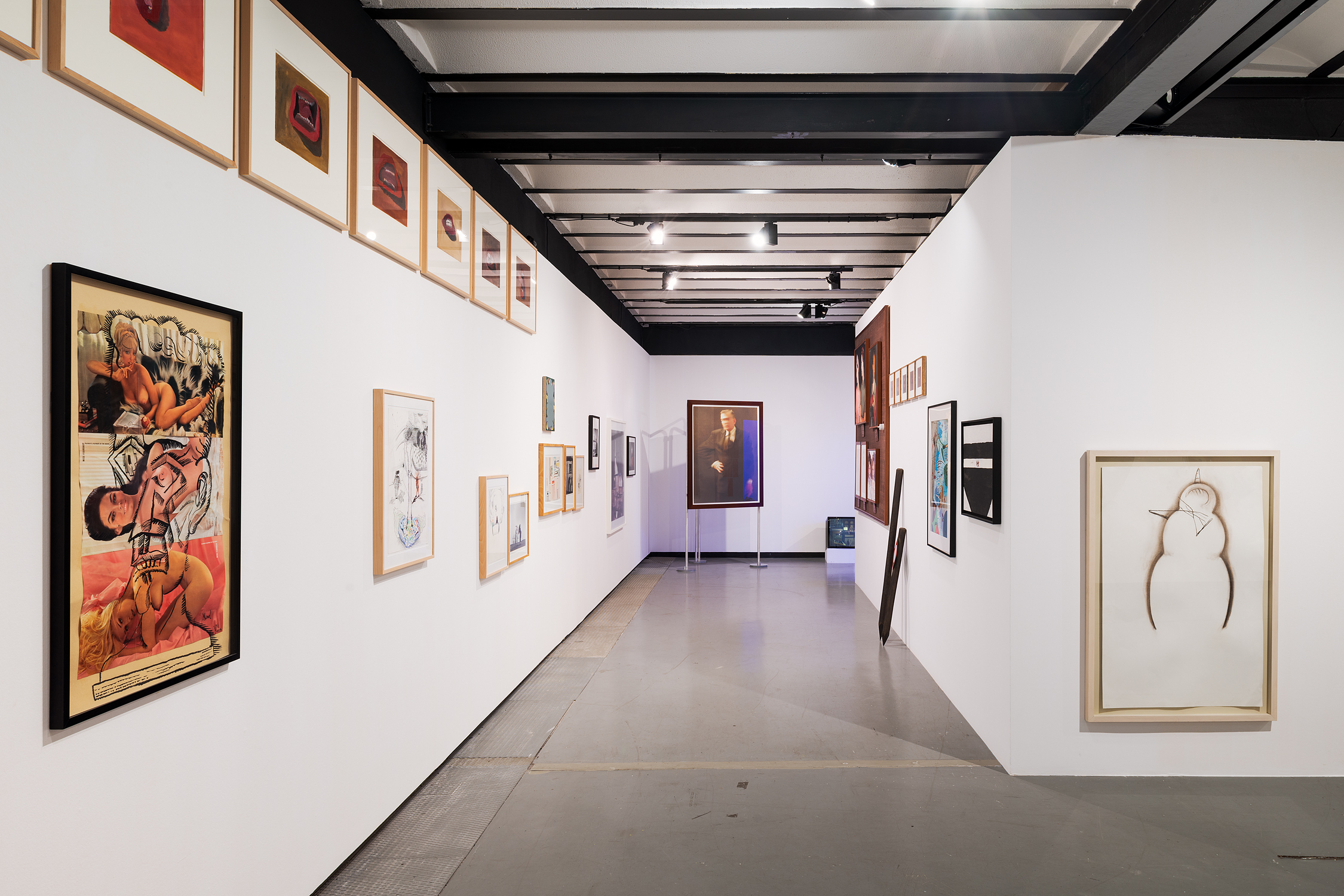
Views of the section Laziness. Photos: Daniel Malhão, courtesy of EDP Foundation / maat.
What do we mean when we talk about laziness?
Laziness, as opposed to work, is seen as a sinful act by society at large. The economic system has sought historically to keep the needs of worker-producers to a minimum, to downplay the Dionysian aspects of life and emphasise functionality and profit making.
The fourth and last act of the exhibition presents works that invoke our right to laziness: the luxuriant dimension of sexual pleasure, of useless and non-productive activities, of the energy and vibrancy of music, of collective and individual emotions. Evoking the memory of these moments is to give sense to our present acts.
Joie de vivre. Pleasure should have a collective scale. The public appropriates the space and the works, becoming an involuntary actor. In the room that closes the exhibition, where the work The Big Red Puff Sound Site by João Paulo Feliciano is installed, we share an idea of community that we urgently wish to recover in the present; allegorical hedonism on a collective stage where we express our expectations and frustrations.
The boundaries between a visitor’s passive observation and a performer’s activity are blurred and made complementary: the visitor moves, wanders and builds a meta-narrative. This exhibition-installation contradicts the dominant formalism which reduces our hyper-reality to a discrete two-dimensional world.
On each of the four “stages” or thematic sections, a different photograph from Jorge Molder’s series Condição Humana [Human Condition] accompanies us like a mirror.
An exhibition is a mechanism and a thought process that is materialised temporarily. An exhibition offers not so much rest for the eye, as exercise for the brain.
Laziness is hard work.
-
Detail of the installation The Big Red Puff Sound Site by João Paulo Feliciano, 1994. Photo: Daniel Malhão, courtesy of EDP Foundation / maat.
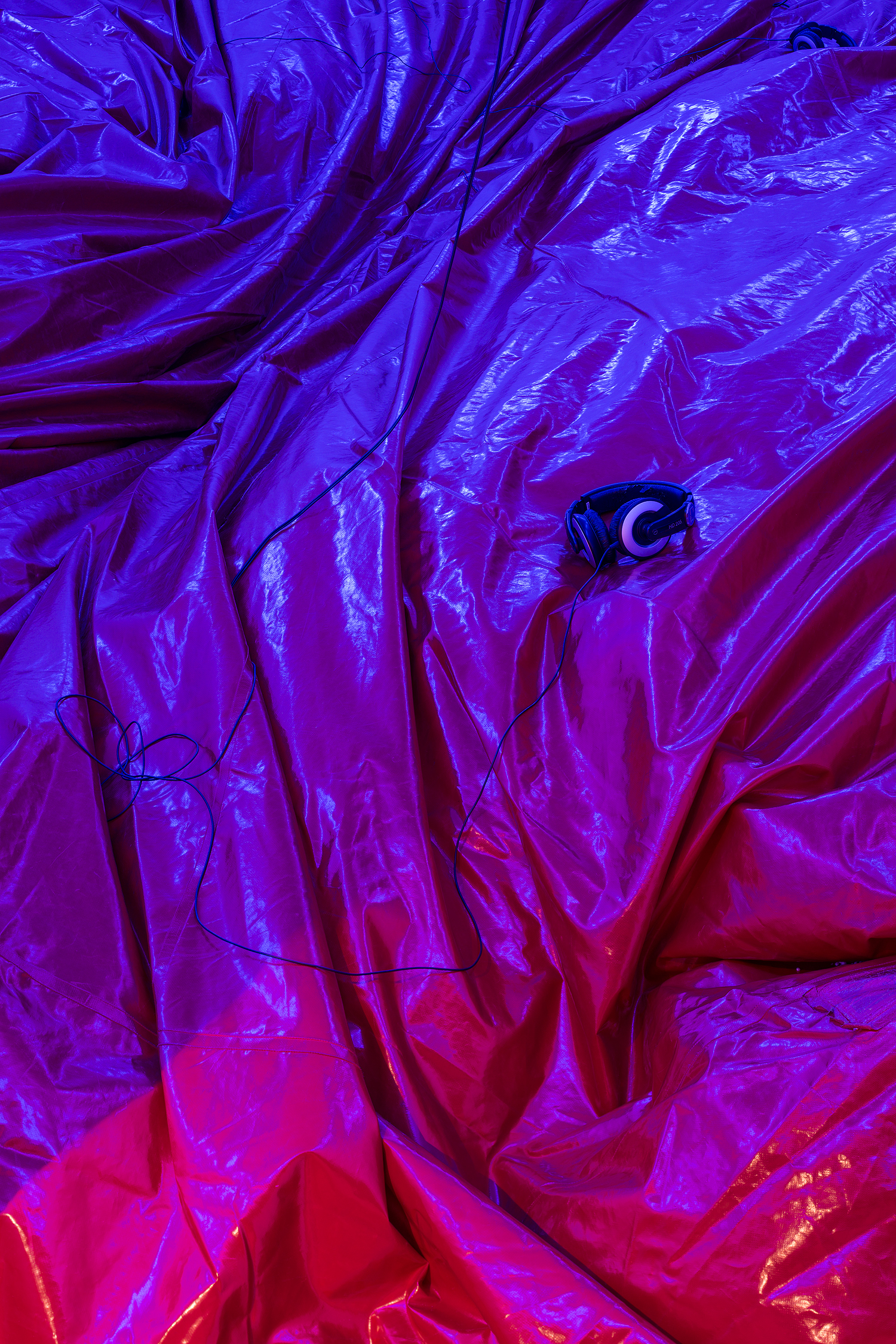
Special commissions
Words and sound have a fundamental presence in this exhibition that works with memory.
The passage of time is recorded in the images, words and sounds we preserve from each era.
Gonçalo M. Tavares and José Valente were asked to iconoclastically appropriate the works featured in the exhibition, which covers a historical period of collective memory from 1942 to the present.
The space of the Tejo Power Station, an industrial building inhabited by workers and bearing the scars of a certain political and social period, was an element that had to be kept in mind during the composition process.
The text Work, Sound, Word and Laziness. Joshua, Martha, Rhann and Kross, an original composition by Gonçalo M. Tavares for this exhibition, is a family story developed in four moments, accompanying the four words that conceptually underpin the exhibition: a father working with fire that alters the form of things, the shapes that produce a sound, delusion and fear, tension, the knife that remains in the hand.
The musical composition Work, Sound, Word and Laziness by José Valente, also specifically conceived for this exhibition, is divided into five movements, four of which correspond to the thematic sections of the exhibition, and a fifth that is manifested in a comprehensive sound environment which both integrates and contaminates the entire exhibition space.
The manner in which these fictions of word and sound add new interpretations to the interpretation of exhibited works, and the manner in which text and music can merge into a single work, were critical parts of the work process. The encounter between words and music ultimately provokes a sensation of a dense environment, a perverse and disturbing experience. The “stages” that structure the psychological and architectural design of the exhibition are the centres of its four thematic sections – Work – Laziness – Word – Sound – and serve to make each visitor/performer a protagonist in the exhibition. From each “stage”, visitors face an audience composed of works that “experience” the musical composition and the fragment of the fictional story corresponding to each of the themes.
To devise an exhibition is to conceive the production of an experience for the receptor, an exercise of free mental and physical wandering and reflection, a polyphonic, fragmented and organic enactment, as happens in life and in the construction of the social body.
© Diogo Aguiar Studio
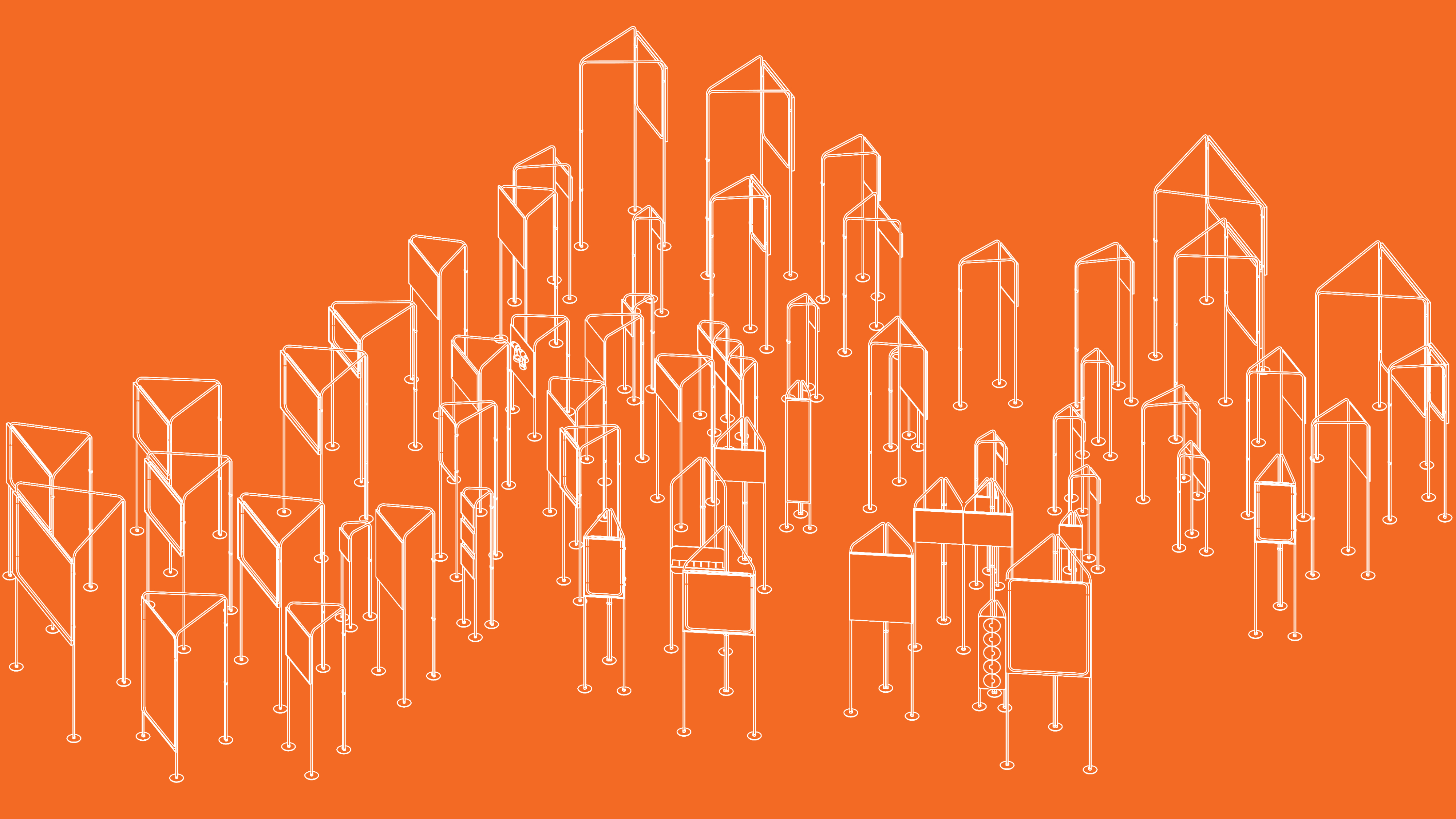
The exhibition design by Diogo Aguiar Studio works with a structural system of self-supporting and geometrically oriented devices that personify actors within the huge industrial space of Central Tejo. “The design promotes different visiting routes, as well as different timeframes [for the visitor] to appropriate and create diverse relationships between the works in the exhibition, while also revealing their hidden side”.
Paulo Mendes is a visual artist, curator of exhibitions and producer of cultural projects. His work is presented both individually and collectively since the early 1990s, and is represented in numerous public and private collections. Over the last thirty years, Mendes participated in approximately 300 curatorial and performative projects, having curated and produced more than 70 exhibitions, both independent and institutional, which marked the work development of a new generation of creators and provided him with an extensive knowledge of the Portuguese artistic practices.
In 2021, maat inaugurated a new programme around the EDP Foundation collections. Both collections — Portuguese Art and Energy Heritage — are regularly presented within the spaces of Central through an invitational series of curatorial projects by diverse experts, researchers and thinkers that are intended to engage with this reservoir of knowledge from multiple intellectual vantage points. By providing alternative conceptual and scholarly interpretations, the programme aims to bring forward new readings to enlighten historical, social and technological narratives that go beyond those of the collection itself.
The EDP Foundation Portuguese Art Collection was started in 2000 with the aim of encompassing several generations of contemporary Portuguese artists, as well as assorted expressions of artistic creation such as painting, photography, video and installation. Continuously evolving with yearly acquisitions, the collection comprises approximately 2,400 works by more than 330 artists.


